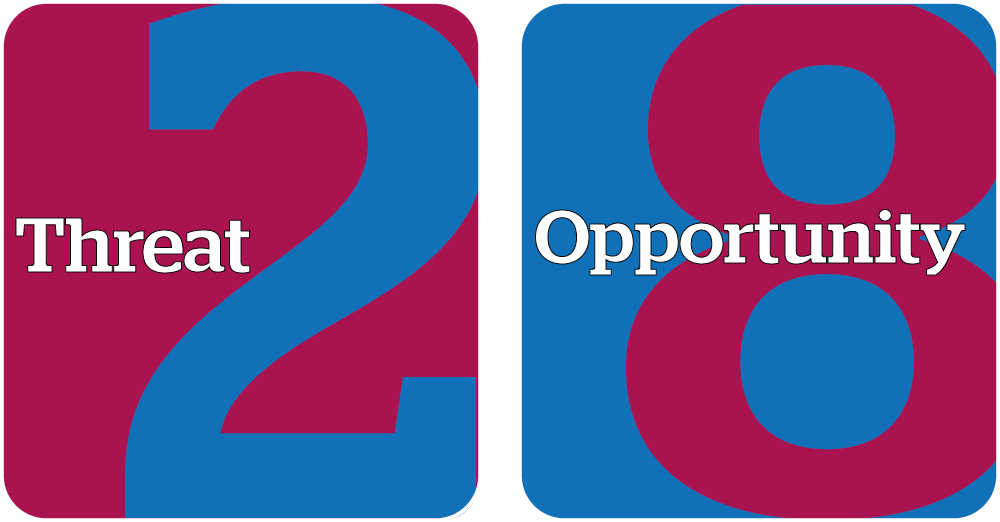25 Mar 2022
Our series exploring six core dynamics shaping the veterinary profession today and in the future continues with a discussion on client care.

 Almost five years ago the Big 6 project broke new ground with a series of hard-hitting articles focused on the six core dynamics shaping the veterinary profession at that time.
Almost five years ago the Big 6 project broke new ground with a series of hard-hitting articles focused on the six core dynamics shaping the veterinary profession at that time.
Now, Big 6 is back, with a series of in-depth features and long-form podcasts to bring Vet Times readers exclusive insights and analysis about the dynamics driving the sector today, and in the future…
Since the turn of the century, the veterinary profession has been shaped and remodelled by the irresistible impact of many powerful dynamics. Some of these dynamics have brought – and continue to bring – unwanted change and disruption; others have delivered opportunities for innovation and evolution within the sector.
The coronavirus pandemic has accelerated many of these forces of change, with COVID-19 compelling practices and their people to respond in ways that have not only highlighted and exacerbated existing problems, but also pointed towards new possibilities and potentialities.
It is against this backdrop that Vet Times is rebooting the Big 6 project – an expert discussion forum that broke new ground when results were first published five years ago in sister title VBJ.
The premise of the project is to put six core areas of the profession under the spotlight to examine some of the driving forces shaping modern veterinary practice.
Our ambition across this monthly article and podcast series is to not only provide an insight into how things currently stand, but also produce a road map for the future.
To help us achieve that ambitious goal, Vet Times is hosting a series of expert forum discussions featuring vets, business leaders, and key opinion leaders from both inside and outside the sector.
Having started with the subject of transformational technology, the series will go on to cover client care, engaging employees, operational opportunities, and finance and regulation, before finishing with a deep dive into the short and long-term impacts of COVID-19.
For the second article in the Big 6 series, we invited veterinary business consultants Alan Robinson and Alison Lambert, innovation expert Greg Dickens, VMG president Rich Casey and practice owner Jenny Reason to discuss the wide-ranging impacts of a fast–evolving client base.
While many areas and topics were debated during the course of our latest live forum – which is also available in full as a podcast – the discussion has been grouped under four main headings: COVID client care, managing clients, client connection and client value perception.
 Rich Casey
Rich CaseyRich worked in HR and people development before joining PDSA in 2011 to work on a range of operational and people projects. He then joined Blue Cross in 2016 as clinical development manager, and in this role he oversees the development of veterinary services and manages partnerships with private veterinary practices. Rich is also president of the Veterinary Management Group.
 Jenny Reason
Jenny ReasonAn experienced small animal vet and owner of Bury St Edmunds Veterinary Centre. Jenny holds a Certificate in Advanced Veterinary Practice and has a particular interest in surgery and orthopaedics.
 Alison Lambert
Alison LambertManaging director of training, research, marketing and veterinary business consultancy Onswitch. Alison is an also a honorary associate professor of veterinary business at the University of Nottingham and holder of both the Australian Veterinary Association’s Veterinary Business Thought Leader and RCVS Impact awards.
 Alan Robinson
Alan RobinsonA vet who owned a successful mixed practice for more than 20 years, Alan is now a director of Vet Dynamics, an independent business consultancy providing tailored resources for practice performance, business intelligence, team engagement, and leadership and culture.
 Greg Dickens
Greg DickensA veterinary surgeon and innovation consultant with Innovia Technology. Greg has authored numerous articles on the subject of innovation in the veterinary sector.
Image © LIGHTFIELD STUDIOS / Adobe Stock
One of the biggest challenges the veterinary profession had to face when coronavirus struck in March 2020 was how to protect animal health and keep clients happy.
For a sector where customer service has always been such a big priority, the impositions placed on clients – especially during the first frantic months of the pandemic – put enormous strain on many businesses.
The removal of restrictions has seen most practices return to a pre-COVID way of working, but there can be little doubt that two years of pandemic vetting has left a lasting legacy.
As discussed in the previous article in this series, transformational technology, many practices adapted their approach by providing more digital access and by restructuring their teams to maintain levels of patient care and client engagement.
But did these approaches work? We asked members of our panel what they thought of the profession’s response to the pandemic.
Managing director of Onswitch Alison Lambert said: “There isn’t an SOP for how do we deal with a pandemic, and I think everybody who dealt with it did what they could and did it brilliantly in those initial months – patient care, team protection, public safety; the whole thing.
“I think that was done brilliantly by everybody and everybody was on the same page about it. I think wave two was different; other industries had modified, flexed and done stuff, but the anxiety started picking up in the veterinary sector – I think that’s what our client mediation service data showed as well. It was fine in the beginning, but then when we went into lockdown two, it started to get a bit fractious.
“We could have modified sooner; there were still people not embracing things such as asynchronous communication, outbound calling, looking at how we can do digital engagement, how we can do proactive sending of meds – all of that stuff; we did it in phase one because we had no choice, but we didn’t embrace it as a profession and take it into phase two in the way that perhaps we could have done.
“And now we are in phase three, there are still people who haven’t done what most people did in phase two, so there are a few practices that are still not doing online booking, asynchronous communication work and outbound calling.
“Some practices are flying because they embraced the learnings from wave two and one – they are doing really well – but there are still lots of others still pondering on all of this.”
For business consultant and founder of Vet Dynamics Alan Robinson, there are clear lessons to be learned from the profession’s approach to client care during the pandemic.
He said: “I think practices did the best they could on what they knew on the day, but with any major change there are three rules at play. The retrospect scope always works; so looking backwards we could always say we could have done better and done differently.
“The second thing is, no matter how much you do communicate, you will always need to do more – no matter how much information you give people you will always be asked for more. And the third rule of communication is that whatever you say is not what people hear, so that just adds to that confusion. I think the important part of this question is that communication was what it was on the day.
“Going forward, I think the terminology is digital first; what we tend to do in the veterinary profession is bolt it on – bolt on another app; bolt on this; bolt on some remote things. There’s no integration of any of that. With any of these things – client care; vet performance; anything – it’s the amount of friction we produce in the process that stops this stuff happening.
“Digital technology increased client care and increased client interaction. We need to meet the client where they are and technology is just the perfect way to do that; embracing that is the difficulty for a lot of other reasons.
One of those reasons is that the needs of clients are often very different and those needs are constantly evolving; a point made by VMG president and clinical director at Blue Cross, Rich Casey.
“Not all clients were coming from an equal playing field; it’s a lot easier to implement an application or a new way of working once all the risks and the ways of working are clearly understood, and not all practices had that understanding,” he said.
“Talking from a charity sector background, I can say that client needs are often different. For example, it’s a common misconception that clients within the charity sector have less means or ability to interact digitally, whereas we have seen that the download rate and utilisation of it is in the upper quarter of any private practice.
“With my VMG hat on, we’ve seen the whole range, but a lot of practices have worked hard to ensure that things are communicated consistently among their team and among their client base, and those practices have absolutely thrived.
“When the pandemic started, everybody was in the same place because bang – it was a big shock to everybody. Now we need to accept that people are going to remain being anxious. People – staff and clients – will remain being a bit brittle for the foreseeable future, and it’s about how then we manage and accept that our clients and our team will remain anxious and brittle, and how that’s not going to go away, so how we do manage that.”
For practice owner Jenny Reason, keeping her practice team up to date and fully informed was key to delivering successful client care during the pandemic.
She said: “You have to make sure that you are on the same page as your team, because otherwise, you’re giving mixed messages out to your clients anyway.
“For us, any of the little hurdles were because things were being communicated to the team at a different speed to how they were being communicated to clients and the people weren’t quite all on the same page for a while.
“But we also had to learn a lot of other stuff and fast; we brought in a teleconsulting platform quite quickly – it wasn’t without its bugs, but you know we’ll forgive people in that sort of situation because that’s what happens, so we were able to utilise that.
“We have also started doing a lot more outbound calling just to stop the phone ringing because the phones were jammed, and that has helped a lot – our staff are spending less time on the phone and our clients are not spending ages sitting on the phone waiting to get through to us. That helped a lot.”
Closing this section of the debate, vet and innovation consultant Greg Dickens suggested that the veterinary profession should look at how other sectors had evolved their services offering to clients during COVID.
He said: “We spent the last session talking about technology and I’m going to move it away from that. I’m going to say that outside the veterinary profession in the medical field, they had the whole telemedicine debate. But they also started looking at ways to offer completely new services. They looked at what it was about pandemics and lockdown that changed people’s health and well-being, and how they could target that specifically. There was a huge boom in psychological and relationship medicine, and a lot of very lockdown-specific services.
“I didn’t see that at all from the veterinary profession here. I didn’t see ‘so, you have to live with your dog 24 hours a day – we can help you with that’. I didn’t see ‘you’ve now realised that your dog is in the house all day whether you’re there or not – you didn’t know that before, did you?’.
“I just wonder if there are still things we can learn from this pandemic before we leave it for good, hopefully.”
“There isn’t an SOP for how do we deal with a pandemic, and I think everybody who dealt with it did what they could and did it brilliantly in those initial months…”
Alison Lambert
Image © Seventyfour / Adobe Stock
One of the most powerful dynamics at work in the veterinary profession during the past decade has been the situation around recruitment and retention.
The struggle for staff has left some practices with understrength or unbalanced rosters, which can inevitably lead to friction at a time when there is relentless demand for their services – a situation only exacerbated by the pandemic pet-buying boom.
The Big 6 panel discussed how practices have turned to a variety of measures to keep the show on the road – some more extreme than others – with a growing number using the cover of COVID to rid themselves of difficult clients.
Alison said: “We don’t routinely measure rates of asking clients to go away and rates of attrition, and as we don’t measure them we can’t categorically say anything has gone up, but it probably has, but do you know what? We should have been managing our clients who are abusive and miserable to us pre-COVID, not just throwing our toys out the pram in COVID, because we are part of the issue.
“Society is a bit pissed off with the pandemic and people are anxious and worried, so yes, we’re all becoming quite unpleasant within the service interactions in all spheres.
“We have to change how we do what we do. And that’s one thing some people have done, which is the team consulting approach and everybody doing the thing that they’re best at; so stopping vets doing things they’re not best at.
“With the team consulting approach you can care for more people because you don’t need to be the vet doing all the stuff. And I think that’s culturally something we need to kind of shake off. Why is a vet doing some stuff when, quite frankly, the nurses are better at it and why are the nurses doing stuff that, quite frankly, a customer service person is better at?”
Greg added: “Outside of the veterinary industry; outside of medical care, sacking clients is completely normal. It’s an understood, no judgement, no acrimony thing – it’s a purely financial decision.
“Assuming the rate of client sacking has gone up during COVID, and as Alison said, there is no accurate data to say that it is, but we think it probably has, I want to know if those sackings are based on tightening profit margins or are they based on the frustration felt by people communicating in different ways and finding out that actually it can be rather difficult?”
For Alan, much of the friction is not about profit margins – it’s about massive over-demand and massive under-resource in practices that are now being forced to control client flow for the first time.
He said: “Previously, it’s been footfall, footfall, footfall, and getting them through the door and churning them through, and that has been the basis of many of the ills of veterinary business.
“Many practices have had this balance between fearful, uncertain, worried and anxious clients banging on their doors because they can’t get to see their own vet – on the other side of that they have had a fearful, overworked, anxious and burned out set of staff saying ‘we just can’t cope with this anymore’. And that’s where it’s starting to come from.
“I saw some practices closing their books – which is very common practice in other industries – or filtering clients by putting certain requirements around the acceptance of new clients, and those strategies can work very well.
“Those we saw that did it were significantly better off from a mental health and survival situation, and have been throughout the pandemic.
“But this comes back to one of the basic underlying myths of the veterinary profession – that we have to treat animals at any cost, but the cost of that has been to our people and our teams.”
Not everyone was comfortable with the idea of actively selecting clients, however.
Jenny said: “For me, it is important that we remember people have good and bad days. I’ve seen some incidents where people are saying they’re sacking clients who have previously been very good, which is a bit concerning because then in those cases, you do have to wonder what has happened.
“Has there been a complete communication breakdown, which has led to this, or something else happening in that client’s life? I will admit that we have sacked a few clients recently, but one of them has also been sacked from the local post office, too, so it is not just us.
“Overall, the idea of picking and choosing clients makes me incredibly uneasy, because I feel that then we are almost portraying ourselves as an elite. And I don’t feel right about being portrayed as an elite service that only those who are good enough can access. People from all walks of life have pets and the benefits that those pets bring to those people are immense.
“You can tailor to your clients who want it all and you can tailor to your clients who have next to nothing, and you can still give such a good service to those people on their level.
“I think the sooner we start thinking it’s not just us that this happens to the better – anyone, in any customer service, has to deal with bullshit.”
“We need to accept that people are going to remain being anxious. People – staff and clients – will remain being a bit brittle for the foreseeable future.”
Rich Casey
Image © Monkey Business / Adobe Stock
It has been estimated that more than three million people bought pets during the coronavirus pandemic – many of them from the younger generation.
The Pet Food Manufacturers’ Association’s latest pet population report showed that almost two-thirds of these new owners were Generation Z or millennials, with 59 per cent of those buying a pandemic pet aged between 16 and 34. But did our Big 6 panel think the way the veterinary profession interacts fits with its existing client base, as well as those of this changing demographic?
Alan said: “One of the adaptions we talk about is can we take cash off the table completely, because the biggest friction point between clients and practices is money. It is the biggest, most contentious, repeatable, onerous friction point in the whole thing.
“One of the other big needs of clients is compassion and I think vets are hugely compassionate people for pets in particular, maybe less so the client and absolutely not for themselves.
“Then we have compliance – we want clients to do stuff – and then convenience; they want it now. It’s Sunday night; it doesn’t matter – they will do whatever’s necessary because convenience is really, really important as they have no delay gratification.
“But those three client needs are negated by one thing and that’s ‘over-busyness’ of trying to serve every client who turns up to your door. We can treat anybody, but you can’t treat everybody. And I come back to that point that if we don’t control that client quality and quantity, we are going to burn out our people to the point that we don’t have any of those things left.”
On this point, Greg warned that the profession may also need to adapt to the needs of a less affluent client base and the evolving health needs of its pets.
“We are seeing levels of disposable income go down. Now, you just talked about removing money from the table and I agree,” he said.
“Everything should be a subscription model with risk sharing, but the total amount of disposable income is going down. We’re seeing a lot more people in rented accommodation than bought accommodation. And if that continues, that has impact on which pets people can and can’t have. We’re seeing a lot of allergies; a lot more fur allergies coming through – again, with impacts on what pets people can and can’t have.
“And finally, gig economy is pushing us into really weird hours and that might have impact on when they can and can’t come to a vet. So, yeah, I agree that the needs are broadly similar and those three Cs are the way forward, but the needs will be tilted by the new generation coming through.”
Rich added: “It’s about what’s new today will become the norm tomorrow. But I would perhaps add that we don’t necessarily know what the needs of the next generation will be, but there are some things we can predict in terms of what next generation needs are.
“Greg listed some great ones like the allergies; gig economy – I also think the subscription model approach is a game changer. It started to come into the UK veterinary practice. It’s a bit more prevalent in America.
“In general I think the profession needs to get a bit more comfortable knowing that there’s going to be something around the corner that we don’t know about it yet. And actually, not be so shocked or surprised when that happens. And when it does happen, not get our backs up and try to push against it.
“At the moment there is a choice for practices when it comes to how they engage with clients, but that’s not going to be the case in years to come. That choice of going digital is going to become less and less. So, if you’re not embracing it now, it’s going to become more and more difficult in the future.”
“You can tailor to your clients who want it all, and you can tailor to your clients who have next to nothing, and you can still give such a good service to those people on their level.”
Jenny Reason
Image © bnenin / Adobe Stock
One of the few predictable aspects of the pandemic was the sharp increase in the number of reports in both the regional and national press of clients complaining about the rising cost of veterinary care.
These complaints are nothing new and, according to Alan, many have their roots in the way practices have been run for many years.
He said: “We know that veterinary practices, pre-pandemic, have made their profits from selling products and drugs with markups that subsidise the business to such an extent that they massively undercharge for their services and discount time.
“This causes a massive imbalance and leads to the product-driven business model. That is what people complain about, so we need to take away that the financial incentive and replace it with long-term subscriptions and other such things.
“The business model is skewed and that has been exacerbated in the pandemic by compassion fatigue; by lack of self-worth; by all the underlying factors that drive veterinary business that need to be re-adjusted and settled.
“And the press has been picking up on that in the pandemic, with some of these stories about vets ripping clients off, but there is an agenda there for sure.”
Greg added: “Vets in the US suffer from this a lot less because consumers in the US are very used to paying a lot for medical care. If you could, if say, the veterinary industry could be very nice to the NHS just for a second and ask them to give people a bill when they leave hospital that itemises just how much everything costs at the end, people might be a little more lenient with vets.”
Rich believes part of the solution is about adopting a more pragmatic approach: “What I want to talk about here is what we have in our individual control when you talk interacting with the client about price,” he said.
“My clients tell me that their top three things they look from a veterinary service is transparency, non-judgement and the ability to spread the cost. The challenge, though, is that the vast majority of – particularly newly graduated veterinary professionals – are just not comfortable or confident talking or delivering pragmatic approaches to veterinary medicine.
“They’ve been taught that the top-notch level of delivering veterinary care is in a referral level hospital, but it’s in our control to look at how confident and skilled our teams are at delivering a level of service that is more pragmatic, so instead of ‘we could do this or that diagnostic’, it’s ‘I would not do this diagnostic because it’s not going to improve the patient outcome – and it’s actually a waste of your money’.”
Expanding on this point, Jenny said: “I do think there does need to be much better teaching about the different options and not being scared of not offering every diagnostic.
“Because you don’t need to do everything with every animal you see. I mean a lot of them will get better regardless of what you do, not because of what you do.
“I think there are a lot of recent graduates who want to do every single diagnostic under the sun and the client goes ‘no’, then the vets go: ‘Well, we can’t treat your pet then’ – and that’s the end of the conversation, whereas, that should never be the end of the conversation.
“If every time someone comes in to the vet they are paying for blood tests or further diagnostics then that is where they start thinking that we’re doing tests unnecessarily and they are being ripped off.
“I think if vets were less scared of being sued or having a complaint and realising that there are lots of things you can do as a GP, and also that everything does not need referring as that can be incredibly expensive for clients and can also add to that negative perception of vets.
“We need to get back to being able to believe in ourselves and not thinking that everything needs a specialist because that is not the case.”
“I just wonder if there are still things we can learn from this pandemic before we leave it for good, hopefully.”Greg Dickens
By way of a conclusion to this second article, we asked all our panellists to provide us with a threat and opportunity rating for the evolving needs of clients. We’ve taken all our panellists’ responses to produce an overall rating…

Do you agree with our panellists’ scores? Answer our quick poll below: